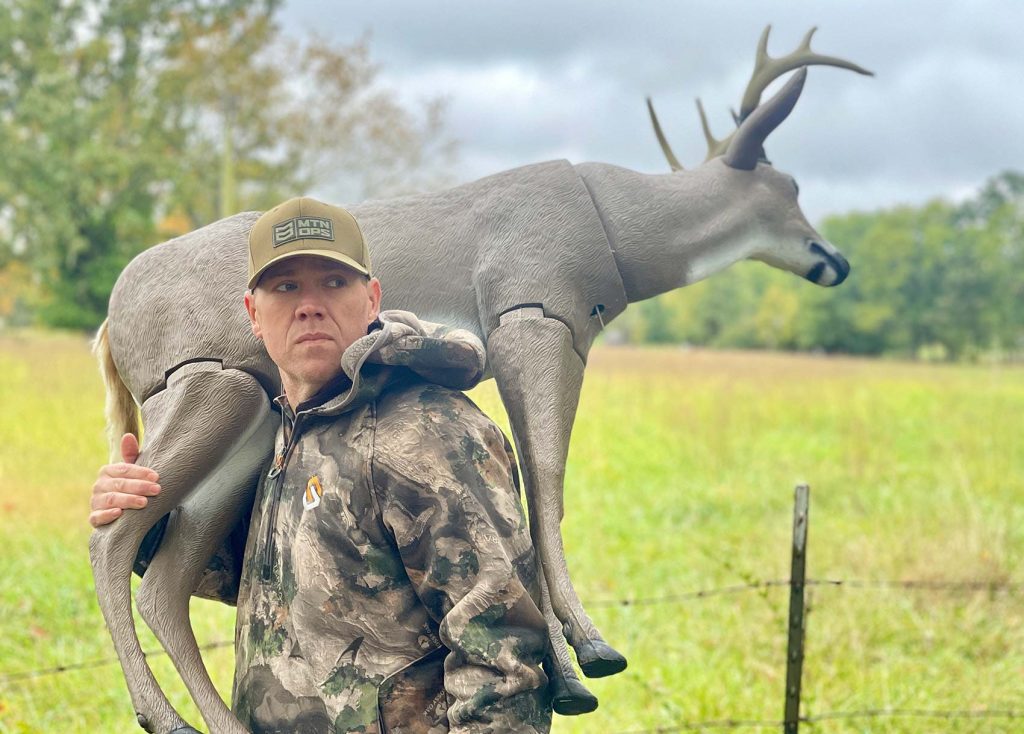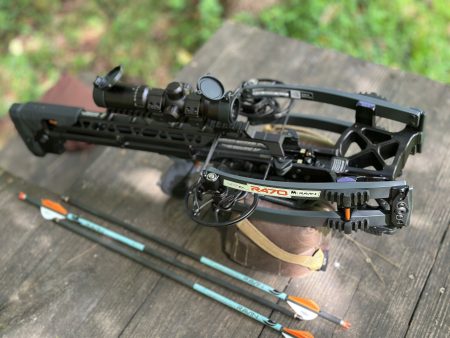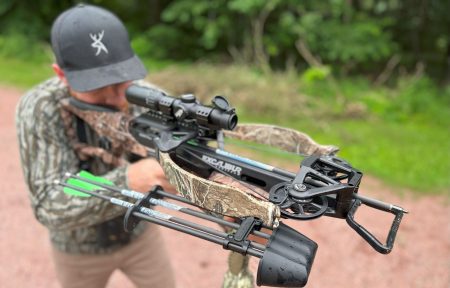Deer hunting transcends being a mere sport; it’s a craft that demands a combination of skill, strategy, and patience to navigate the wild in pursuit of elusive bucks. Throughout the years, hunters have developed a range of techniques to up their game, and one increasingly popular method is the strategic use of deer decoys. As a younger adult, one of my favorite hunting personalities I often watched on TV was hall-of-fame bowhunter Phillip Vanderpool. Although I have become acquainted with Vanderpool throughout the hunting industry, I have never told him that he is the reason I love bowhunting with a deer decoy in the proper position. This extensive guide will delve into the art of deer decoys, uncovering the nuanced approach that I often watched Vanderpool do many times and throughout my experiences that have helped bring mature bucks into close range when hunting with a bow or crossbow.
For your convenience, you can click to shop all of the gear mentioned in the author’s gear list right here:
- Vortex Optics Razor HD 4000
- Hunters Specialties True Talker
- *Best 3D Deer Decoy: Primos Hunting Scarface*
- *Best 2D Deer Decoy: Montana Dreamy Doe*
- Wildlife Research Centers Scent Killer Gold Body Wash & Shampoo
- Raw Frozen Scents – 30+ Peak Estrus
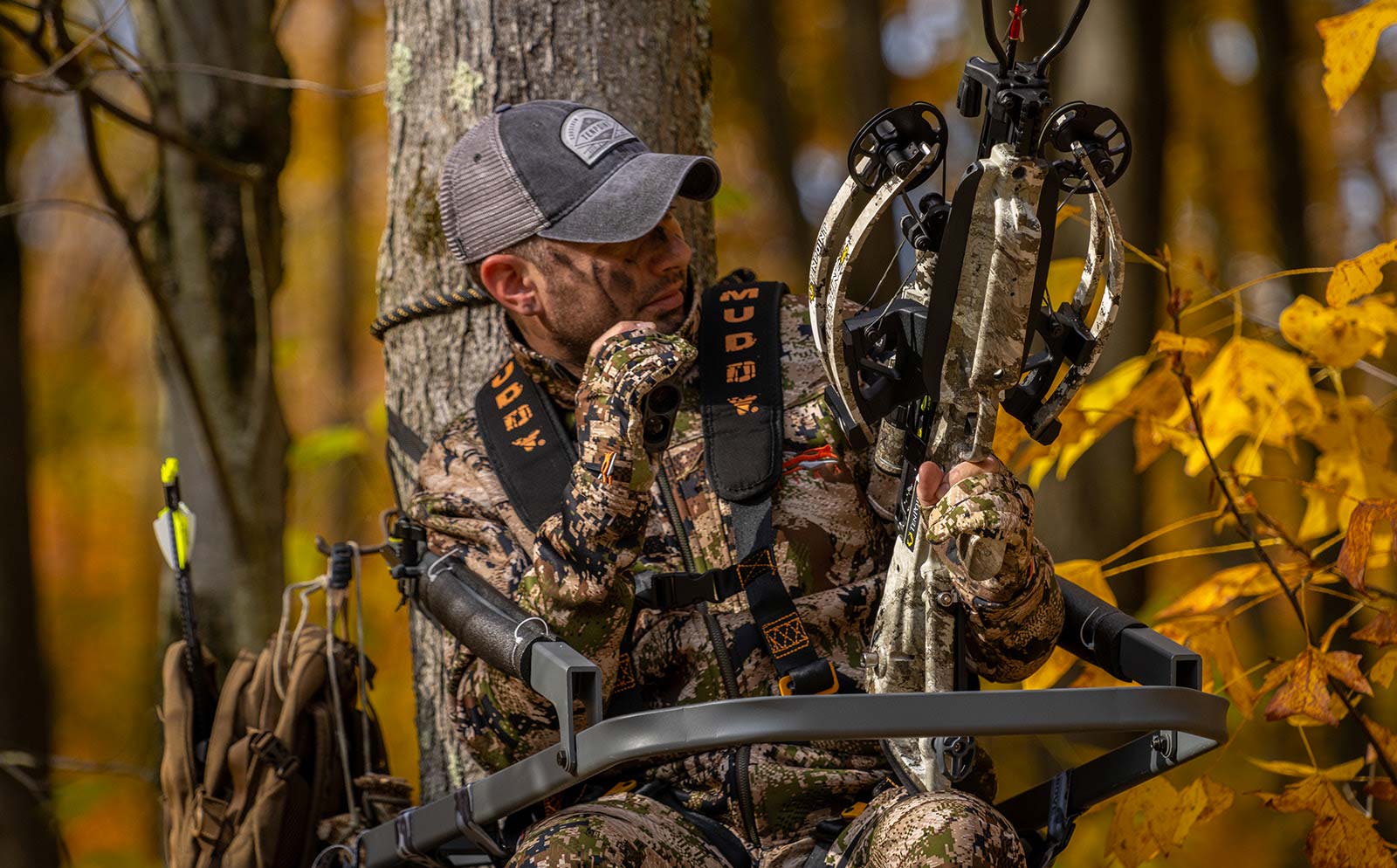
Timing is everything when it comes to the effective use of deer decoys. Different seasons offer distinct ad- vantages.
Early Season: This is when bucks often form bachelor groups, making them receptive to curiosity and dominant postures.
Pre-Rut: As bucks start marking their territory, it’s a prime opportunity to position doe decoys to attract their attention.
Rut: The breeding season is the ultimate moment for decoy deployment, as bucks actively seek does and respond readily to both doe and buck decoys.
Late Season: While decoys can still be effective, it’s crucial to note that bucks tend to be more cautious as the season progresses.
The rut stands out as the most exhilarating and challenging period I have experienced for deer hunting with a buck decoy. During this time, bucks are most active, fervently seeking mates. In late October and early November, I have had some of the most adrenaline-filled hunts that one can experience. A ticked-off buck responding to grunting and rattling, who then sees my decoy, can often be as exciting and fast-paced as a mature buck who has devoted every second of his time to pursuing a hot doe. Here’s how to make the most of your deer decoys during this intense time.

HOW TO PLACE A DEER DECOY FOR CALLING & GRUNTING
Deploy a doe decoy alongside a buck decoy to simulate a breeding scenario, luring territorial bucks closer. Strategic positioning is essential; the decoys should be visible but positioned at a distance that encourages natural movement and is visible from multiple angles. One of the most vital parts of your setup should be done with a rangefinder such as the Vortex Optics Razor HD 4000. We have also created a list of the best range finders for hunting should you want to see more. The decoys can act as range markers when a buck is within crossbow range. Your decoy setup should also involve proper position for strategically using rattling and grunting calls. I often use my Hunters Specialties True Talker grunt call and a rattling bag to simulate two bucks sparing their antlers. Bucks often duel it out for dominance or when competing over a hot doe during the rut or the days prior. When using these calls to mimic various scenarios, such as fighting or mating, depending on the specific rut phase, drawing a mature buck into close range can be a work of art for a bowhunter.
Remember that moderation is vital when rattling and grunting; and subtlety often achieves more than excess. Aim for realistic situations, and don’t blast the area on a quiet fall morning with loud calling that can sometimes keep bucks too hesitant to come any closer.
Primos Hunting Scarface is my go to for deer decoys.
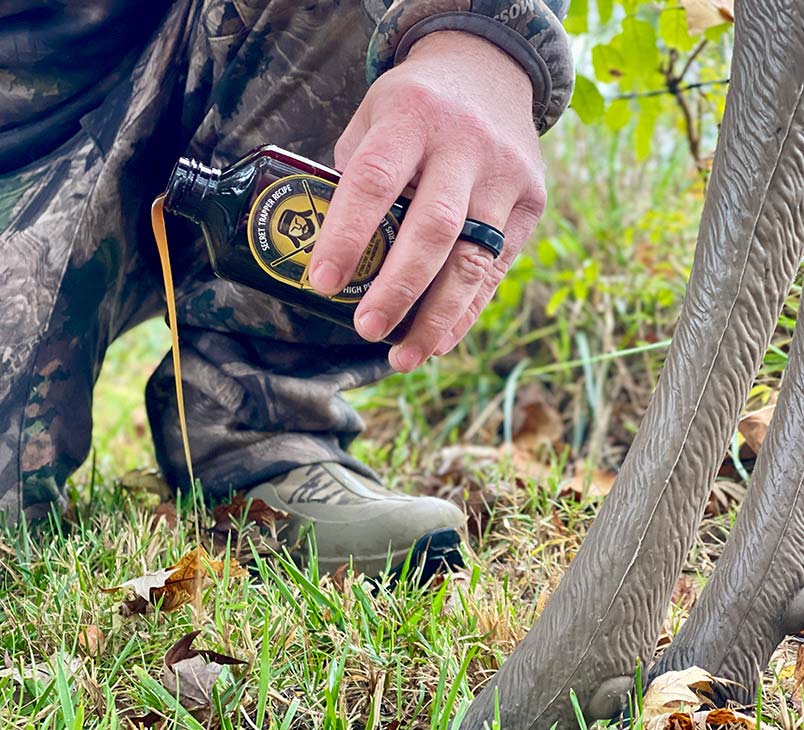
SCENT CONTROL WHEN USING DECOYS
It is no secret that deer have a remarkably keen sense of smell, and mastering scent control is crucial. Although I am aware of human odor on my hunts, using scent-blocking soaps and wearing scent-neutral clothing to minimize human odor is critical when bowhunting over a decoy.
First, eliminating odors from the decoy itself is vital before hunting. When I know I will be using a decoy, I take my decoy out in the backyard and wash it down thoroughly with a water hose and scent-eliminating soap such as Wildlife Research Centers Scent Killer Gold Body Wash & Shampoo. I then scrub it down to remove any unwanted odors. I follow this step by storing my decoys with natural cover scents to mask any lingering human scent. A well-maintained decoy is more likely to deceive a wary buck. Regularly inspect and clean decoys to eliminate dirt, debris, and scent residues.
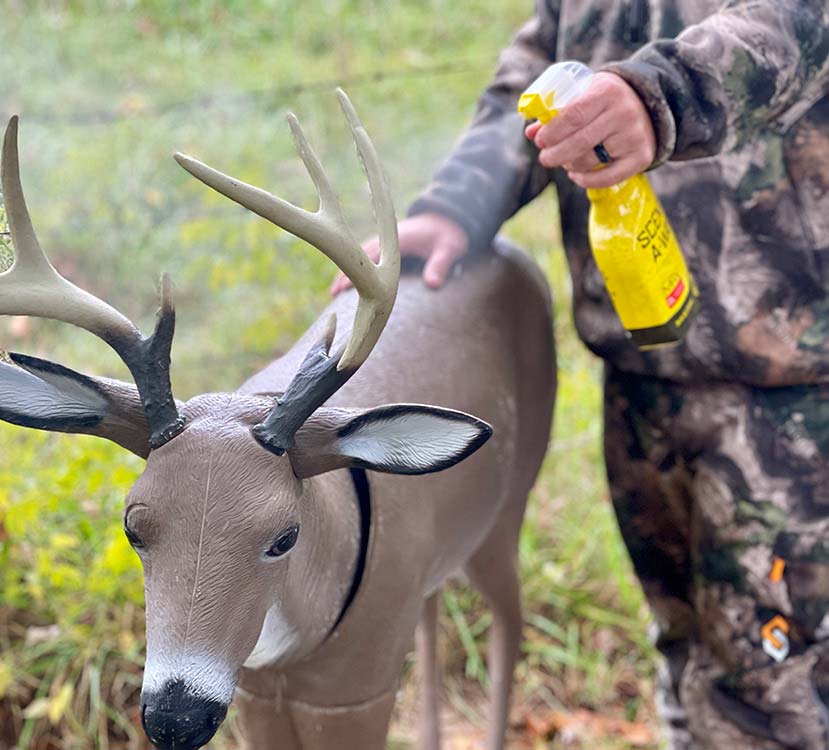
Now that the decoy is clean and free of unwanted odors, paying attention to scent when setting up to hunt is the next vital step in bringing mature bucks into close range. Most importantly, pay close attention to wind direction; always hunt with the wind in your favor. Once the decoy is in the proper position, it is time to add your desired scent and lure that will help confirm that the decoy is lifelike when bucks respond to rattling or grunting or when simply strolling by your stand area.
The choice of scent can significantly impact your decoy’s effectiveness. Consider using an estrus doe or dominant buck scent during the rut to attract curious or territorial bucks. One thing I learned from Vanderpool when I was younger, that I have always done when hunting myself, is never putting scent directly on the decoy. Instead, I apply all my scents and lures on the ground under or behind the decoy. If sprayed on the decoy, the scent can linger on the next hunt, making cleaning the decoy each time more of a task. Plus, you can’t store or hide the decoy between hunts without getting the scent on you, your truck, or other objects you would rather not have smelling like deer urine. When using a doe decoy, try using Raw Frozen Scents – 30+ Peak Estrus scent.
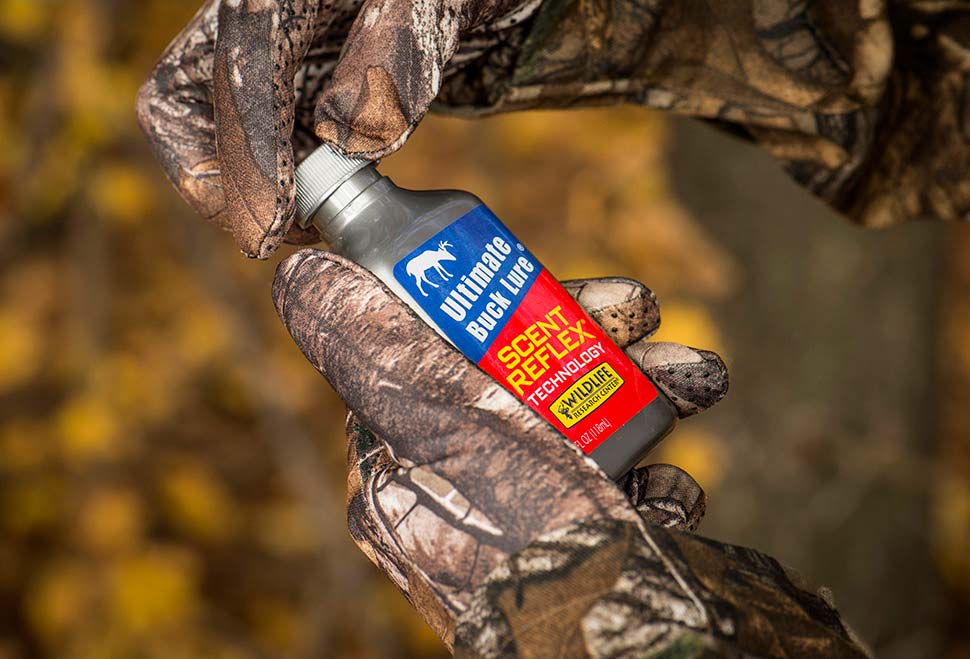
HOW TO SET UP A DEER DECOY SPECIFICALLY FOR USING A CROSSBOW
Strategic placement is a gamechanger in directing bucks into your archery range. Position your decoys within 20-30 yards of your stand, quartering towards you, thus ensuring an optimal shot opportunity.
Leverage natural obstacles and terrain to channel deer into your desired shooting lanes. Using a crossbow can offer substantial advantages for close-range archery with decoys compared to hunting with a compound or rifle. Crossbows are compact and quiet, minimizing the risk of spooking deer when a buck has his ears pinned back and is approaching the decoy or when the hunter uses a grunt call or rattling bag. When I have a crossbow, I feel more prepared and focused on a buck’s body movement and what I need to do to make the shot.
Besides leaving the hunter better prepared, a crossbow often boasts a shorter learning curve and can offer greater accuracy for beginning hunters. Increased accuracy and range expand opportunities for successful shots, allowing less experienced hunters to enjoy the advantages and excitement of buck versus decoy behavior.
Deer decoys are a valuable addition to a hunting arsenal. Bowhunters can dramatically increase their chances of success by mastering the intricacies of timing, using them effectively during the rut, integrating calls, maintaining proper scent control, keeping their decoys in top condition, positioning them with precision, and utilizing a crossbow. Remember, perfecting the art of deer decoys is a blend of science and art, and practice is the key to perfection.
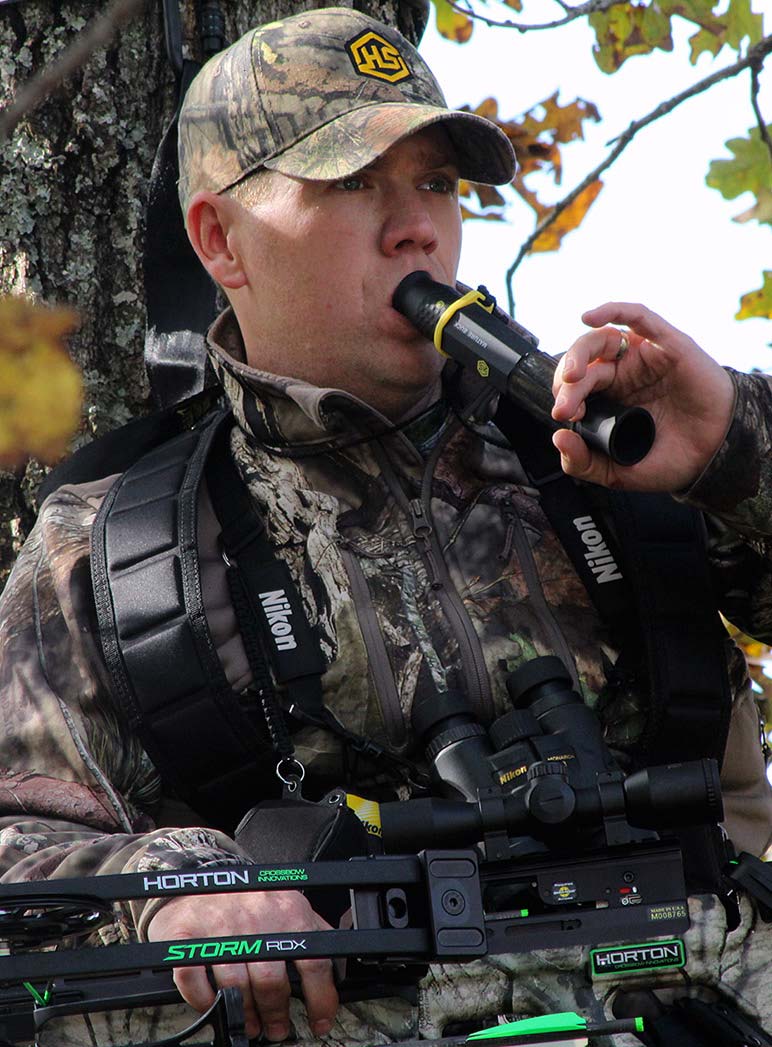
Per our affiliate disclosure, we may earn revenue from the products available on this page. To learn more about how we test gear, click here.

